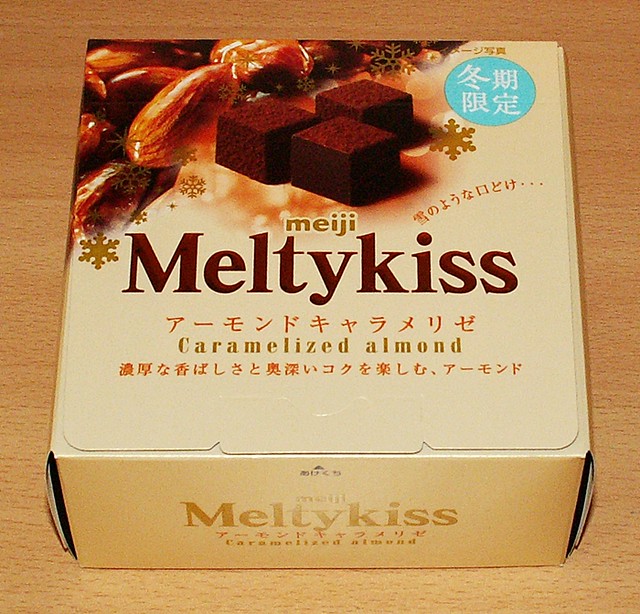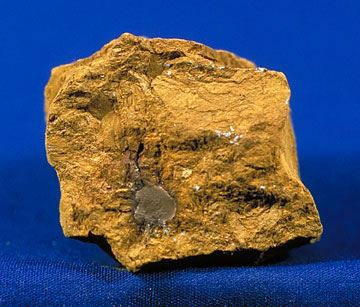First and foremost, sorry for the formatting issues... I tried to make this post with Microsoft Word first thinking it would be easier (and it was!) and then copy pasted the whole thing. Some cutesy items didn't show up much to my disappointment and some columns are not like they ought to appear (mainly because I selected "no borders" to start with!). I could not fix any of them! So there. *bows very low*
Here's what the teas I will now review look like:
 |
| 2013 on the left and 2014 on the right - two very beautiful packages! |
I recently received both the 2013 (after a lucky mistake - for me) and 2014 Organic Hanpicked Midor 1st Flush Shincha from yunomi.us. When I contacted the website, Mr. Ian Chun, a very nice and able man even proposed that I could compare them. It was a fantastic idea! He said that by now my 2013 Shincha would be considered "aged". It is still good (and since I tea cupped it, I can very much agree to that), just older and will depreciate faster once open. I actually did prefer the 2013 for the first steeping. It had this peachy taste mixed with exotic fruits that I really didn't expect... and something fishy!
Now a little bit of information before we begin…
What is Shincha?
Shincha is the very first Sencha of the year. The first one picked in the first month of harvesting. But that’s not all; instead of being put in cold storage like the other Sencha, it is packed and sold right away making it a prized tea for its freshness and its young flavour!
The harvesting time starts in early spring and this 2014 Shincha was made available for purchase on the 16th of May this year on the yunomi.us website. By the way, you can get a 15% off on this year’s Shincha if you enter the code shincha15.
It is already June and you may wonder what took me so long to tea cup the tea? Very simple, newly discovered pollen allergies and a cold. You can’t taste or smell anything with a stuffed nose! Luckily, a pharmacist hinted that I may have pollen allergies and I made the decision to try Reactin for allergies and I think it worked. The cold is gone. Also, to top it off, I wanted to make sure of my results, so I tea cupped twice. Then I did something wrong with the 2014 Shincha and had to tea cup it a 3rd time. Then I remembered I ate something a bit fruity about 10-15 minutes before trying the first batch and wondered if my results had been influenced by it. I had to tea cup again. I had to fit thing in between stuffed nose episodes, so there you have it! Sorry for the wait and thank you for your patience! Without further ado, I present to you
It is already June and you may wonder what took me so long to tea cup the tea? Very simple, newly discovered pollen allergies and a cold. You can’t taste or smell anything with a stuffed nose! Luckily, a pharmacist hinted that I may have pollen allergies and I made the decision to try Reactin for allergies and I think it worked. The cold is gone. Also, to top it off, I wanted to make sure of my results, so I tea cupped twice. Then I did something wrong with the 2014 Shincha and had to tea cup it a 3rd time. Then I remembered I ate something a bit fruity about 10-15 minutes before trying the first batch and wondered if my results had been influenced by it. I had to tea cup again. I had to fit thing in between stuffed nose episodes, so there you have it! Sorry for the wait and thank you for your patience! Without further ado, I present to you
Organic Handpicked Midori 1st Flush Shincha from the Shizuoka Prefecture
2013 | |
Dry Leaves:
|
Dry Leaves:
|
– Mellow, sweet, it has warmth and a green aroma
|
– Asparagus, sweet, smooth and more vibrant than 2013
|
– White chocolate brownie aroma with melted white chocolate
|
– Creamy buttery greens aroma
|
– Has a bit of a duller medium-dark green colour to it, but still a bit shiny
|
– Shinier medium-dark green colour giving the impression it’s of lighter colour (it isn’t)
|
– Long dark green needles amidst shorter ones with some lighter green needles and big particles
|
– Long dark green needles with some lighter green ones (no particles!)
|
– More astringent aroma like ripped tree leaves
| |
– Spinach, more pungent than 2014
|
1st Steeping 一煎目
Steeping method (Senchado technique (Kyusu)):
5g of tea – 2 minutes – 80ml (1/3 cup) of water – 60°C
Liquor:
|
Liquor:
|
– Clear and shiny
|
– Clear and shiny
|
– Lighter, yellow-green colour with particles at the bottom
|
– Slightly darker yellow-green with small dust particles at the bottom
|
– Cream of buttered spinach nose
|
– More vibrant cream of spinach aroma
|
Taste:
|
Taste:
|
– Green Umami attack which tapers off quickly
|
– Mellow sweet green grass attack that tapers off more quickly than 2013
|
– Peach, buttered greens and something that feels like metal (mussels?) which lingers
|
– Buttery and white chocolate finish
|
– Sweet, mellow and almost creamy
|
– Some astringency
|
– Almost no bitterness
|
– Mellow sweet green attack
|
– Exotic fruit (papaya?), peachy aftertaste
|
– Flowery
|
– Very mild astringency
|
– Some bitterness
|
Steeping method (Senchado technique (Kyusu)):
5g of tea – 15 seconds – 80ml (1/3 cup) of water – 65°C
Liquor:
|
Liquor:
|
– More dusty and murky
|
– Has a lot of dust particles floating about and is murky as well
|
– Nice buttery greens nose
– Medium straw yellow colour
|
– Vibrant buttery greens
– Medium green-yellow colour
|
Taste:
|
Taste:
|
– More astringent
|
– Smoother in taste
|
– More bitter which is slightly unpleasant to me who likes sweet things
|
– Mellower and smoother bitterness which is way more pleasant than 2013
|
– Light exotic fruits and peach with mussels aftertaste
– Pleasant green Sencha taste (I know this sounds generic, but if you drink enough Sencha, you know what I mean.)
|
– Pleasant green Sencha taste (I know this sounds generic, but if you drink enough Sencha, you know what I mean.)
|
Here are what the wet leaves look like. I couldn’t tell the difference except that 2014 looks a little paler, but when mixed with buttery margarine, honey and shôyu, it was still too bitter to eat! Maybe I should have over-steeped them to remove the bitterness!
It seems that the 2013 is more to my liking than the 2014… that is, in general. The first steeping gave me quite a shock with the 2014 compared to 2013, as the 2013 was mellower and sweeter and 2014 more vivid, vibrant and like chewing fresh green leaves. 2013 also developed peachy and mussels flavours in aftertaste which I became quite fond of.
The 2014 was not bad per se, it is younger in taste (especially in the 1ststeeping) but it might just be because the 2013 is deemed “aged”. 2014 offers a very pleasant 2nd steeping cup that is smoother than the 2013. However, I was not able to find anything really peculiar in the 2014… either there was a too intense Sencha green tea taste or it wasn’t strong enough for me to find it or it just didn’t have that little something 2013 had. One thing for sure, I will also age this 2014 Shincha and if I remember, will do a single review on it with a link back to this review.
2013 wins but 2014 is still worth its weight in ¥en!
Additional editing:
I felt my review was a bit harsh, so I decided to add a little more:
To do both teas justice, I am not a big fan of Sencha teas labelled as Sencha (because Gyokuro IS a Sencha per definition as "shaded tea"). They are usually too green and the attack too strong for my delicate palate that just wants smooth and sweet things with very little astringency and bitterness if any.
As a Sencha, I believe these two products were pretty good. Excellent? I wouldn't venture in that direction as I am no expert on Sencha and am just giving my 2 cents. Someone who is really into Sencha might like them greatly as the 2014 is very fresh and the 2013 sort of vintage which is very interesting in flavours.
End of the edited part.
The 2014 was not bad per se, it is younger in taste (especially in the 1ststeeping) but it might just be because the 2013 is deemed “aged”. 2014 offers a very pleasant 2nd steeping cup that is smoother than the 2013. However, I was not able to find anything really peculiar in the 2014… either there was a too intense Sencha green tea taste or it wasn’t strong enough for me to find it or it just didn’t have that little something 2013 had. One thing for sure, I will also age this 2014 Shincha and if I remember, will do a single review on it with a link back to this review.
2013 wins but 2014 is still worth its weight in ¥en!
Additional editing:
I felt my review was a bit harsh, so I decided to add a little more:
To do both teas justice, I am not a big fan of Sencha teas labelled as Sencha (because Gyokuro IS a Sencha per definition as "shaded tea"). They are usually too green and the attack too strong for my delicate palate that just wants smooth and sweet things with very little astringency and bitterness if any.
As a Sencha, I believe these two products were pretty good. Excellent? I wouldn't venture in that direction as I am no expert on Sencha and am just giving my 2 cents. Someone who is really into Sencha might like them greatly as the 2014 is very fresh and the 2013 sort of vintage which is very interesting in flavours.
End of the edited part.
Next time, I would like to do a Barley Tea cupping (which would, in fact, be an herbal tea). I have 3 small tea bags of 10g of Hida Mugicha Barley Tea. I want to give you a hot and a cold review since summer is coming and cold Barley Tea is much appreciated during that time in Japan!



















